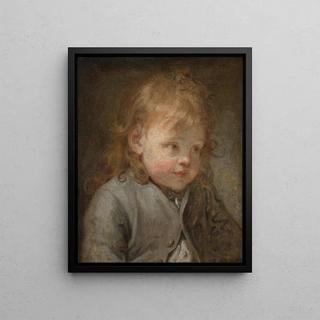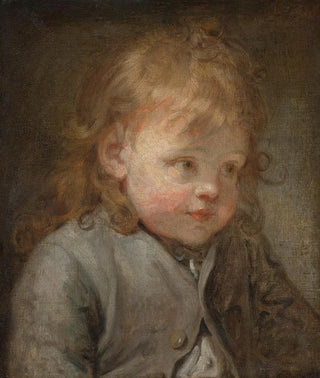Art print | Portrait of a young boy - Jean-Baptiste Greuze


View from behind

Frame (optional)
The "Portrait of a Young Boy" by Jean-Baptiste Greuze is a work that transcends the simple frame of painting to immerse us in the intimacy of a moment frozen in time. This painting, created in the 18th century, testifies to the finesse and sensitivity of its author, a master of portraiture who knows how to capture the soul of his subjects with unmatched delicacy. Through the expressive gaze and natural posture of this young boy, Greuze invites us to explore the emotions and thoughts that inhabit him. The soft light bathing the scene and the subtle nuances of color create a warm atmosphere, making this work both accessible and deeply touching.
Style and uniqueness of the work
Greuze's style is distinguished by a realistic and psychological approach to portraiture. In "Portrait of a Young Boy," he manages to combine technical virtuosity with emotional sensitivity. The boy's facial features, finely detailed, reveal a depth of expression that demonstrates the artist's skill in observing and transcribing human feelings. The composition of the work, all in simplicity, highlights the main subject while creating a harmonious balance with the background. Every element, from the drapery to the play of light, contributes to strengthening the visual and emotional impact of the painting. This artwork embodies the very essence of classical portraiture, where the subject is not only depicted but also celebrated in his singularity.
The artist and his influence
Jean-Baptiste Greuze, an emblematic figure of the Rococo movement, established himself as one of the most influential portraitists of his time. His work, which combines realism and idealization, has inspired many artists, both contemporaries and successors. Greuze was able to capture daily life and human emotions, a approach that earned him lasting recognition in art history. His portraits, often imbued with a certain melancholy, explore themes of youth, innocence, and the fragility of the human condition. Through works like the "Portrait of a Young Boy," he paved the way for a new way of approaching portraiture, where the

Matte finish

View from behind

Frame (optional)
The "Portrait of a Young Boy" by Jean-Baptiste Greuze is a work that transcends the simple frame of painting to immerse us in the intimacy of a moment frozen in time. This painting, created in the 18th century, testifies to the finesse and sensitivity of its author, a master of portraiture who knows how to capture the soul of his subjects with unmatched delicacy. Through the expressive gaze and natural posture of this young boy, Greuze invites us to explore the emotions and thoughts that inhabit him. The soft light bathing the scene and the subtle nuances of color create a warm atmosphere, making this work both accessible and deeply touching.
Style and uniqueness of the work
Greuze's style is distinguished by a realistic and psychological approach to portraiture. In "Portrait of a Young Boy," he manages to combine technical virtuosity with emotional sensitivity. The boy's facial features, finely detailed, reveal a depth of expression that demonstrates the artist's skill in observing and transcribing human feelings. The composition of the work, all in simplicity, highlights the main subject while creating a harmonious balance with the background. Every element, from the drapery to the play of light, contributes to strengthening the visual and emotional impact of the painting. This artwork embodies the very essence of classical portraiture, where the subject is not only depicted but also celebrated in his singularity.
The artist and his influence
Jean-Baptiste Greuze, an emblematic figure of the Rococo movement, established himself as one of the most influential portraitists of his time. His work, which combines realism and idealization, has inspired many artists, both contemporaries and successors. Greuze was able to capture daily life and human emotions, a approach that earned him lasting recognition in art history. His portraits, often imbued with a certain melancholy, explore themes of youth, innocence, and the fragility of the human condition. Through works like the "Portrait of a Young Boy," he paved the way for a new way of approaching portraiture, where the






